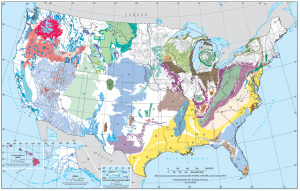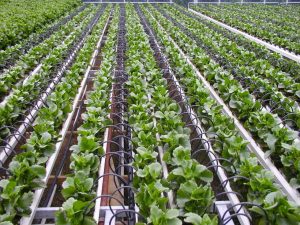The Water-Energy Nexus: A Vicious Cycle
Water and energy are the two most fundamental ingredients of modern civilization. The water-energy nexus is the relationship between how much water is evaporated to generate and transmit energy, and how much energy it takes to collect, clean, move, store, and dispose of water. Without water, people die. Without energy, we cannot grow food, run computers, or power homes, schools, or offices. As the world’s population grows in number and affluence, the demands for both resources are increasing faster than ever.
The Water-Energy Connection
Energy production is the second largest consumer of water, the first being agriculture. Electric power plants that are fueled by oil, coal, natural gas, or nuclear power require exorbitant amounts of water to cool them, and hydropower plants require water to create energy. Likewise, a significant amount of energy is used in the pumping, treatment, and distribution of water, as well as in the collection, treatment, and disposal of wastewater. In addition, the extraction of fossil fuels used for heating and cooling homes also requires vast amounts of water. Clearly, the relationship between energy and water is inexorably intertwined.

As the population and affluence of the nation continues to increase, so does the demand for both water and energy. Also, climate change has been responsible for increasingly frequent water shortages, requiring communities to find water elsewhere – which requires even more energy. Pumping water from distant areas or glacial icecaps, desalinating ocean water, and highly treating wastewater to potable standards all require exorbitant amounts of energy. Previously, these methods for obtaining potable water were ignored due to their high energy usage. But as water shortages and drought continue to plague the nation, even affecting the historically wet northeast part of the country, more creative ways of meeting the nation’s demand for water must be innovated and implemented.
Likewise, fossil fuels such as oil and gas are being withdrawn at an unsustainable rate, and supplies are dwindling. As these inexpensive energy sources are depleted, our dependence on alternate, more water-intensive sources of energy increases. This endless cycle of water-energy usage has the potential to spiral out of control, and the only way to make a real and lasting change is for policy makers, businesses, and communities to join forces in the planning, management, and conservation of resources and in the innovation of sustainable solutions.
Planning and Management

One of the key factors to a sustainable future is communication. In the United States, there is little overlap in governmental agencies when it comes to water and energy. The Department of Energy has been an entity since 1977, and yet our nation still does not have an agency dedicated solely to water planning. While the EPA oversees water quality and the U.S. Geological Survey collects and interprets data related to supply, there is no single federal agency that ensures the effective use of water. In fact, much of the onus of water management lies not with the federal government, but with state agencies and municipalities. This can prove problematic when aquifers or watersheds span multiple cities and town, or even states. A logical approach to water management would be a federal agency that oversees all aspects of water management, from quality to supply to usage. In this way, federal energy and water agencies could collaborate to help forge a sustainable future. For example, when a new power plant is proposed, discussions should take place on not only the siting and permitting of the new facility, but also the effect on air and water quality, as well as water usage and potential for scarcity. In this way, more focused attention on the usage and effects of both energy and water will lead to more holistic — and sustainable — installations.
Value and Conservation
One of the greatest concerns of the modern day American is the risk of running out of inexpensive oil. The cost of oil pushed gasoline prices to $4.48 per gallon in 2008, and was partially responsible for the great recession of 2009. Realizing that the end of cheap oil could spell economic disaster, many people have begun to look at alternate heating sources for their homes, and alternate means to power their vehicles, such as biofuels or electricity. But how much more disastrous would it be to run out of cheap water? Peak oil would admittedly cause economic difficulty as well as some amount of human hardship, but peak water has the potential to cause far direr consequences. Millions of people globally already die from lack of access to an improved water source, and peak water would increase that number exponentially.

It is critical that the value of water be realized if we are to start making real changes. Gasoline prices are currently around $2.20 per gallon, while a gallon of municipal water costs less than one penny. And yet, we can live without gasoline – we cannot live without water. As society begins to understand that procuring, treating, and distributing water is an expensive task and that supplies are limited, we can innovate technologies that reduce the amount of freshwater that we use. For example, in the western part of the country, the Ogallala aquifer is being depleted at a rate far higher than it is being replenished, and irrigation accounts for 94% of the groundwater withdrawals in that area. Switching to a more water efficient irrigation process such as drip irrigation rather than spray would save a significant amount of water. Also, utilizing reclaimed water for crop irrigation, cooling power plants, and industry would greatly reduce our groundwater withdrawals. Even at the residential level, conservation is important. Community outreach programs and educational materials can be used to teach residents how they can save water in their homes and businesses. Simple, low-cost initiatives such as mowing grass to a higher level, utilizing rain barrels, and planting native trees and plants can have a huge impact when implemented on a large scale.
And let’s not forget about energy. Energy conservation is directly linked to water conservation, and it is critical that saving energy happen at both the industrial and residential levels. All businesses should examine their energy efficiency and implement energy-saving initiatives. And businesses that utilize a lot of water, such as hospitals and hotels, should conduct water audits to examine and modify their water usage. Wastewater treatment should include technologies that create energy from waste, such as anaerobic digestion, in order to offset the energy used in treatment processes. Likewise, homeowners should be educated on the importance of saving energy. Utilizing energy efficient lighting, turning the heat down by a degree or two, and unplugging appliances, computers, and chargers that are not in use are just a few of the ways that the individual American can save energy. In addition, heating residential water uses a significant amount of energy, while solar water heating is a simple technology that is as inexpensive as it is effective and efficient. Unfortunately, it has not received any type of federal backing or media attention, and remains relatively unknown. Both education and policy are critical to the widespread implementation of energy saving initiatives.
In Conclusion
Energy and water are both precious resources that are critical to our health, our economy, and our way of life — and they are inextricably linked. Of the utmost importance is that we value water. Until water has a realistic price on it, as energy does, it will be seen as a resource that can be used and wasted at free will. Only with accurate pricing can the link between water and energy be made apparent to consumers, and that conserving water conserves energy, and vice versa. Likewise, with true pricing consumers would see that as the price of water increases, so does the price of energy, and that as the price of energy increases, so does the price of water. Feeling the effects in our pockets would increase the appearance of value, act as a strong motivator to more aggressive conservation, and would prompt the innovation and implementation of more efficient, green solutions.
